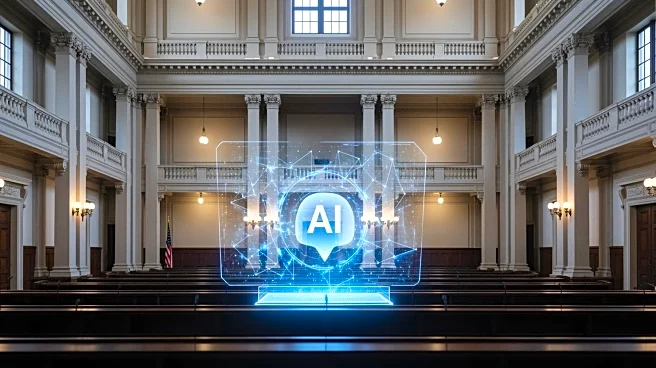What's Happening?
The Knesset in Jerusalem has reopened a historic government chamber to the public, utilizing advanced technology and artificial intelligence to recreate significant moments in Israel's history. This room,
which has not hosted cabinet meetings for decades, now features an immersive display that brings to life the voices and faces of past Israeli leaders. Visitors can experience pivotal events such as the Six-Day War, Operation Entebbe, and Operation Solomon through this innovative setup. The room's original round government table, installed 59 years ago, is central to the display, surrounded by projections of key figures like Prime Ministers Levi Eshkol, Yitzhak Rabin, and Yitzhak Shamir. The initiative aims to blend meticulous preservation with state-of-the-art technology, offering a unique historical experience.
Why It's Important?
This development is significant as it represents a fusion of history and technology, enhancing public engagement with Israel's past. By making historical events accessible through immersive experiences, the Knesset is likely to attract more visitors, potentially increasing annual footfall to around 160,000. This initiative not only preserves historical narratives but also educates the public in an interactive manner. The use of AI and projection technology in historical preservation could set a precedent for similar projects worldwide, highlighting the potential of technology in cultural and educational sectors.
What's Next?
With the reopening of the cabinet room and other public spaces in the Knesset compound, there is an expectation of increased visitor numbers. This could lead to further developments in how historical sites are presented to the public, possibly inspiring other institutions to adopt similar technological integrations. The success of this project may encourage further investment in technology-driven historical preservation and education initiatives.
Beyond the Headlines
The integration of AI in historical preservation raises questions about the authenticity and interpretation of historical events. While technology can enhance engagement, it also necessitates careful curation to ensure historical accuracy and respect for the narratives being presented. This project could spark discussions on the ethical implications of using AI in cultural heritage contexts.











